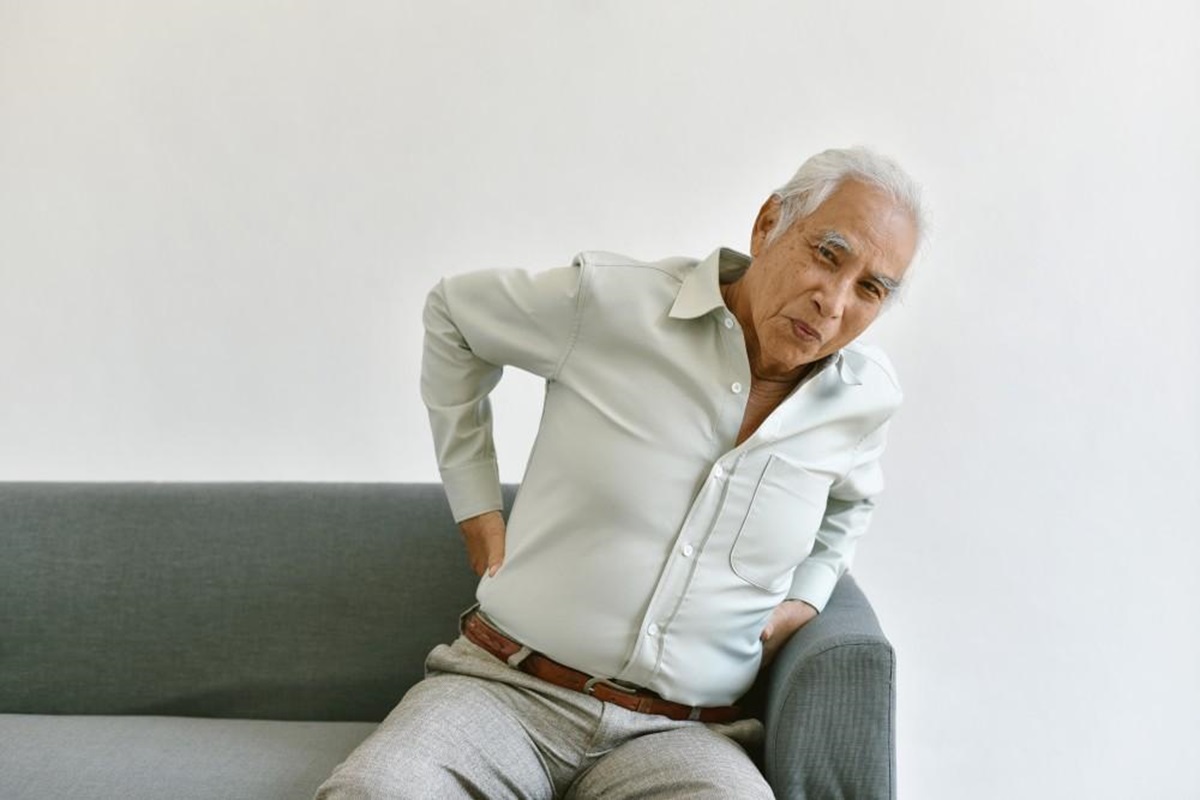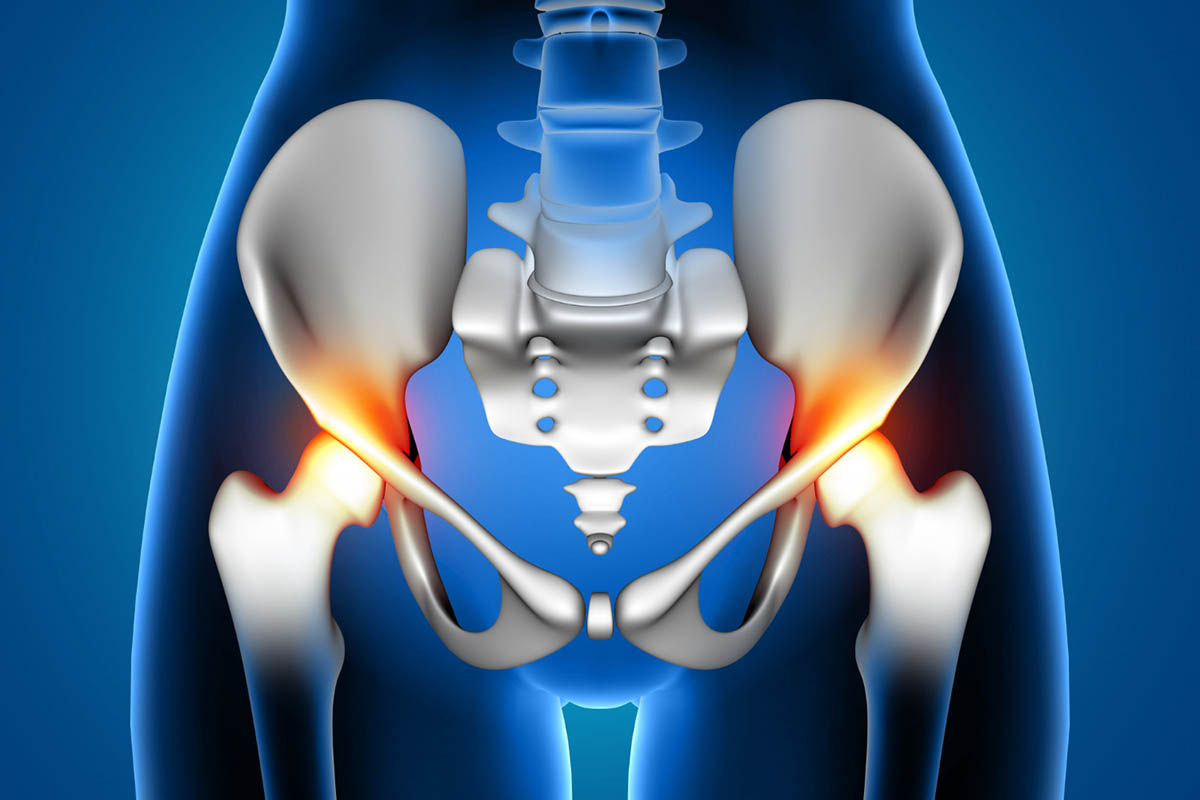Torn hip labrum symptoms can often start subtly, making them easy to overlook. Recognizing these early signs is critical to avoid worsening damage and to begin proper treatment as soon as possible. Addressing the problem early leads to a more efficient recovery and better long-term outcomes.
Torn Hip Labrum
Understanding what a torn hip labrum is and how it functions within the joint helps frame the importance of early care. The hip labrum plays a central role in joint stability and comfort during movement. Identifying torn hip labrum symptoms promptly can prevent long-term hip instability and joint degeneration.
Brief Overview of the Hip Labrum and Its Function
The hip labrum is a ring of cartilage that lines the outer edge of the hip socket (acetabulum). Its role is to stabilize the hip joint, provide cushioning, and maintain smooth joint movement. Structural problems of the hip, like acetabular dysplasia or femoroacetabular impingement (FAI), can increase the risk of damage to this important tissue.
Importance of Recognizing Symptoms Early
Research underscores the importance of paying close attention to hip pain. A 2009 review by Groh and Herrera found that between 22% and 55% of patients reporting hip or groin pain were ultimately diagnosed with a labral tear. This highlights the need for prompt evaluation when symptoms arise to ensure timely and effective care. Identifying torn hip labrum symptoms in the early stages is crucial. Delayed diagnosis can lead to worsening symptoms, increased joint damage, hip dislocation, and a longer torn hip labrum recovery time. Early recognition enables more conservative treatment options and a greater chance of full recovery.
Common Symptoms of a Torn Hip Labrum
Recognizing the warning signs of a torn labrum is essential to getting proper Hip Pain Treatment in a timely manner. Symptoms may appear gradually or after a traumatic injury and often worsen without proper care. Prompt attention to these signs can prevent permanent hip dysfunction.
Pain in the Hip or Groin Area
One of the most frequent torn hip labrum symptoms is persistent hip pain or groin pain. This discomfort may worsen with activity such as walking, running, or prolonged sitting. It may also radiate to the buttock area and is often linked to loss of hip flexion and internal rotation.
Clicking, Locking, or Catching Sensation
Many individuals experience a clicking, catching sensation, or locking sensation during movement. These mechanical symptoms are hallmark indicators of labral involvement and are especially common during twisting or pivoting motions. These sensations may cause a noticeable limp or gait change.
Stiffness or Limited Range of Motion
Stiffness and limited range of motion are key symptoms, often affecting daily tasks like getting in and out of cars. Activities that require hip rotation, such as sports or yoga, may be significantly hindered. If untreated, stiffness may lead to compensatory movement patterns and worsening instability in the hip joint.
Instability or Weakness in the Hip

Instability in the hip joint and hip weakness are common concerns for those with a torn labrum. Patients may feel the hip is giving way or lack control during athletic movements. Hip weakness can also lead to long-term imbalances and recurring symptoms if not properly addressed.
Causes and Risk Factors
There are several causes and contributing factors behind a torn hip labrum. From high-impact activities to anatomical abnormalities, the risk increases when these variables are combined. Understanding these triggers can help tailor both prevention and torn hip labrum treatment strategies.
Athletic Activities and Repetitive Movements
Contact sports and activities that involve repetitive motion or high-impact twisting increase the likelihood of developing a tear. Sports such as hockey, football, and soccer often expose athletes to hip impingement and labral stress. Repetitive pivoting or twisting motions place constant load on the labrum, leading to wear and eventual tearing.
Structural Abnormalities of the Hip
Conditions such as femoroacetabular impingement (FAI), hip dysplasia, or loose ligaments contribute to uneven pressure in the joint. These abnormalities can cause chronic friction or jamming, which leads to degeneration and tearing over time. Identifying these issues early can direct patients toward hip preservation programs and orthopaedics & rehabilitation services.
Traumatic Injuries or Accidents
A torn hip labrum can result from a traumatic injury such as a hip dislocation, fall, or car accident. These injuries often produce severe pain and immediate torn hip labrum symptoms like groin pain and limping. Such cases may require more aggressive torn hip labrum treatment, including surgical intervention.
Diagnosis of a Torn Hip Labrum
A correct diagnosis is essential in planning an effective treatment for torn labrum in hip. Diagnostic clarity helps avoid unnecessary delays and ensures that the treatment plan is both safe and effective. Speak with a PT or sports medicine physician to initiate this process.
Physical Examination and Patient History
An accurate diagnosis starts with a comprehensive physical exam and detailed medical history. Tests assessing range of motion, strength, and pain response help identify labral issues. Your orthopedist may perform specific movements to elicit catching sensation or groin pain.
Imaging Tests: MRI and CT Scans
To confirm a tear, imaging tests such as x-rays, magnetic resonance imaging (MRI) scans, or computed tomography (CT) scans may be used. Magnetic resonance arthrography (MRA) is often the gold standard, providing the most detail of labral structure. These tests help assess the tear’s size and guide surgical decisions if necessary.
Torn Hip Labrum Recovery Time
Torn hip labrum recovery time depends on various factors, including whether treatment involves non-surgical or surgical intervention. Understanding your recovery timeline helps set expectations and guide your return to normal activity. Factors such as age, fitness level, and injury severity also play a role.
Non-Surgical Treatment Recovery Timeline
Non-surgical care plays a key role in managing labral injuries, especially in younger, active individuals. Studies show that adolescent athletes with labral tears often respond well to conservative treatment options like physical therapy and intra-articular injections (IAI), either independently or in combination. For these patients, a customized plan can support healing while minimizing disruption to sports participation and daily life. For those undergoing non-surgical intervention, recovery may range from 8 to 12 weeks. Activity modification, physical therapy, and rest and at-home treatments form the core of this approach. Conservative care is often successful for minor tears, especially when caught early.
Surgical Treatment Recovery Timeline
Patients opting for hip arthroscopy or labral reconstruction may expect a recovery time of 4 to 6 months. This may include prehab before surgery, followed by postsurgical physical therapy. Crutches are typically used for several weeks, and return to full activity depends on muscle strength and range of motion.
Factors Influencing Recovery Duration
- Size and location of the tear
- Type of treatment (non-surgical vs. arthroscopic surgery vs. open surgery)
- Overall health, including aging and osteoarthritis of the hip
- Compliance with rehabilitative physical therapy
- Participation in a structured hip preservation program
- Severity of pre-existing instability in the hip joint
Treatment Options for Torn Hip Labrum
Finding the right torn hip labrum treatment plan is essential to reduce pain and restore function. Options range from conservative care to surgical intervention depending on severity. Backcountry Physical Therapy can help guide your recovery from start to finish.
Conservative Treatments: Rest, Ice, and Physical Therapy
Non-surgical treatment for torn labrum in hip usually includes rest, ice, and rehabilitative physical therapy. Physical therapy helps improve hip strength, correct imbalances, and restore normal movement. Activity modification and use of supportive tools like braces may also be recommended.
Medications and Injections
Pain management options may include over-the-counter medications, corticosteroid injections, or biologic injections such as PRP or stem cells. These options aim to reduce inflammation, allowing more effective engagement in physical therapy. They are often used alongside conservative care to delay or avoid surgery.
Surgical Interventions: Arthroscopy and Labral Repair
Hip arthroscopy allows surgeons to repair or remove the damaged labrum using an arthroscope. This minimally invasive approach is often followed by several months of postsurgical physical therapy. In some cases, open surgery or labral reconstruction may be necessary, particularly for large or complex tears.
Physical Therapy for Torn Hip Labrum
Physical therapy is a cornerstone in both non-operative and post-operative management of labral tears. A targeted plan can significantly impact torn hip labrum recovery time and help patients return to full function. Speak with a PT to begin your personalized rehabilitation process.
Role of Physical Therapy in Recovery
PT plays an essential role in reducing hip pain, restoring range of motion, and improving hip stability. A sports medicine specialist or orthopaedic surgeon often collaborates with a PT to ensure coordinated care. Long-term success depends heavily on the quality and consistency of rehabilitative physical therapy.
Common Exercises and Rehabilitation Techniques
- Strength and flexibility exercises targeting the glutes, hip flexors, and core
- Range of motion drills to restore mobility without aggravating symptoms
- Functional training like step-ups, bridges, and balance work
- Prehab exercises to prepare for surgery or optimize outcomes
These exercises are adjusted based on recovery phase and patient progress.
Preventing Future Hip Injuries
Preventing recurrence of torn hip labrum symptoms is a key goal. This includes addressing underlying causes like hip impingement, hip dysplasia, and muscle imbalances. Routine PT check-ins, sport-specific conditioning, and ongoing strength training are recommended.
Why Choose Backcountry Physio for Hip Labrum Treatment

At Backcountry Physical Therapy, we understand the complexities of labral tears and hip pain. Our comprehensive approach ensures you receive the most effective torn hip labrum treatment tailored to your needs. From diagnosis to recovery, our team supports you every step of the way.
Personalized Treatment Plans Tailored to Individual Needs
Each patient receives a treatment plan based on their lifestyle, goals, and the specific findings from imaging tests and physical exam. Whether you’re seeking non-surgical intervention or recovering from arthroscopic surgery, we adapt care to match your progress.
Experienced Physiotherapists Specializing in Hip Injuries
Our therapists are trained in orthopaedics & rehabilitation and specialize in treating hip conditions like FAI, hip instability, and labral tears. With hands-on expertise and advanced techniques, we help accelerate recovery and improve long-term outcomes.
Conclusion
Torn hip labrum symptoms can be disruptive, but early action can prevent long-term joint damage. Whether you’re pursuing conservative care or recovering from surgery, choosing the right treatment path is essential. Speak with a PT at Backcountry Physical Therapy to explore personalized options and regain control of your movement and comfort.
FAQs
Can you still walk with a torn labrum in hip?
Yes, walking is often still possible, but it may come with hip pain, limping, or limited range of motion. Depending on the severity, some people experience stiffness or weakness that affects their gait.
How do you self test for hip labrum tear?
While at-home maneuvers like the FABER or FADIR tests may trigger symptoms, they are not definitive. A professional evaluation that includes a physical exam, imaging tests, and medical history is essential for accurate diagnosis.
Can a torn labrum in the hip heal itself?
In some mild cases, symptoms may improve with rest and non-surgical treatment. However, the labrum has limited healing capacity, and many cases require structured physical therapy or surgical intervention for long-term resolution.



